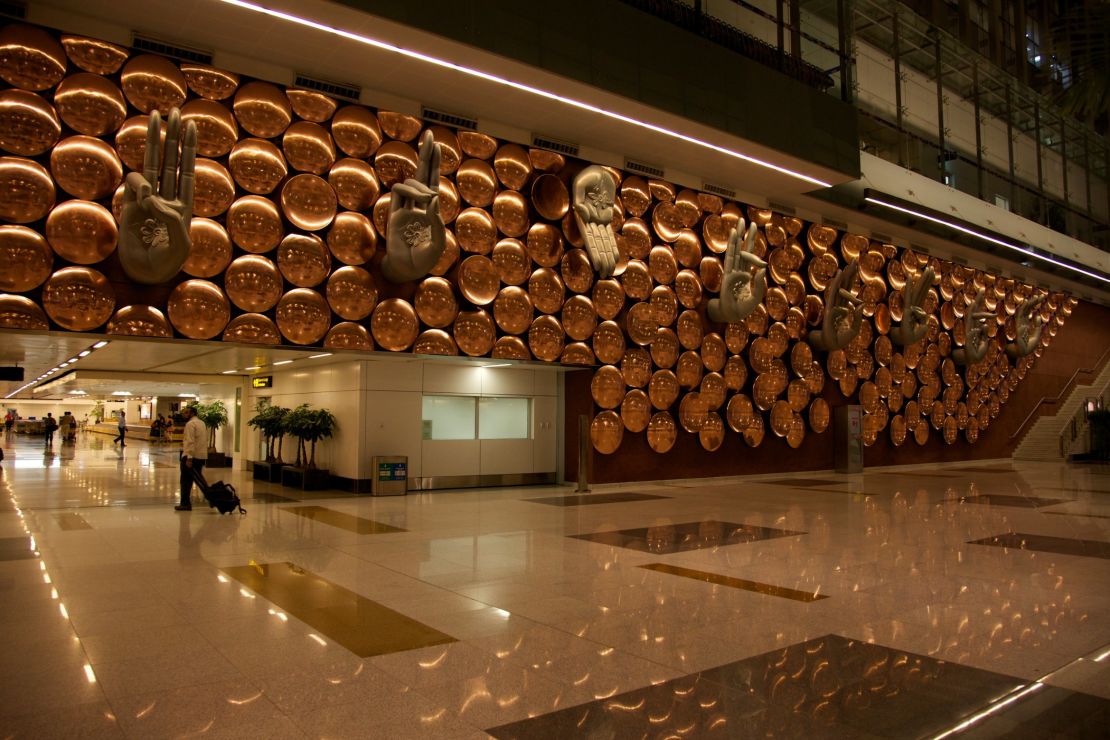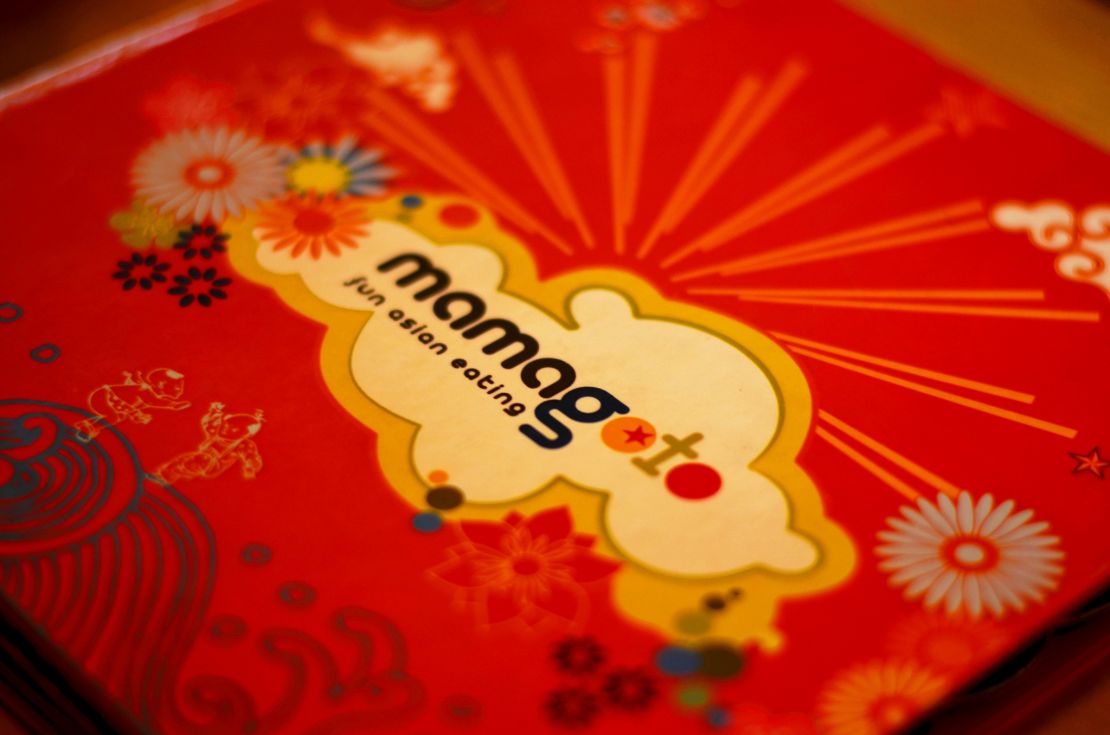Bookstores and bars, young galleries and fresh magazines, even a shiny new outpost at the airport – here are the public spaces in New Delhi, physical and figurative, that offer a hip, cool place to hang out.
1. CMYK bookstore: Print press prowess
Once you know CMYK is shorthand for cyan, magenta, yellow and key (black), the order in which colored inks are applied to a page at a printers, it’s easy to deduce that the printing process is championed at this little bookshop.
CMYK specializes in books on design, by designers.
Dark-wood paneled, track-lit, with drip-filtered coffee free to its patrons, CMYK attracts a clientele that can afford the glossy coffee-table offerings that range from $1.50-$500 (Rs 96-Rs 32,000).
It’s the knickknacks though, the quick fixes for design junkies, that have been flying off the shelves – fillable vases you can collapse and store flat, credit-card-sized reading glasses that slide into a wallet, personalized stationery, Pantone-colored Seletti chairs, pocket art books – all the aesthetic accoutrements desperately needed in design-deprived New Delhi.
2. Paintball field: Lock ‘n’ Load
Paintball is ridiculously fun. Naysayers can whinge about the reinforcement of trigger-happy, aggressive behavioural patterns. Shoot ‘em. The desi obsession with bright and brilliant colors finds perfect expression in the paintball field at New Delhi’s Select Citywalk Mall in Saket.
Teams compete on a field with large yellow plastic pods as barriers, something like a playpen for grown-ups. Games can run for up to an hour, and the pricing depends entirely on the number of pellets you’re willing to pay for.
The rules of engagement are fairly obvious: hang on to the safety equipment, keep your aim level by staying sober, and don’t shoot the referee, ever. Surprisingly affordable, the full package of guns, goggles, gloves, de rigueur camouflage gear and a CO2 tank to pump pellets with, begins at under USD$6 (Rs 250).
Think of it as all year round Holi-mayhem. Sub out the pitchkari water squirters of yore with ultra-efficient paintball guns, and stock up on color capsule ammo. Lock, load, fire!
3. The Cafe at Moon River: Coffee, tea and Audrey?
Ah, the quintessence of sprightly Holly Golightly. Worshipped in words, serenaded on screen, and now captured at an Indian cafe and brewed into a berry or a blossom tea. The Cafe at Moon River is a haven for naifs and waifs who want nothing but to curl up on a big rattan chair and while an afternoon away.
Named for the lilting theme song from “Breakfast at Tiffany’s,” Moon River stays true to its lyrical roots. The creative director, Radhika Gupta crosses (and re-crosses) rivers (and oceans) in style, to be the dream maker for the heartbreakingly lovely objets d’art scattered elegantly across her store.
The cafe is a seamless extension of the space, punctuated by potted palms and paintings and an entire wall overrun with books.
“In a city filled with homogenized assembly line cafes, it’s a small parcel of calmness,” Gupta says. And she gets positively gooey about the “delightfully delicious” double-chocolate chip cookies. The menu is select and tasteful – Ms Hepburn would approve.
4. Shiro: East meets East resto-bar
Pan-Asian anything is the fad currently sweeping the nation. That’s the fundamental marketing truth behind Shiro’s franchised hotspots, including one at the Samrat Hotel in New Delhi. Six-and-a-half thousand square feet given over to an aesthetic that is both familiar yet exotic, with a cuisine that echoes the theme. Three distinct areas include the bar, private dining rooms and a Teppanyaki area with three live cooking stations.
The New Delhi iteration retains the key concepts found in its Mumbai flagship. Dramatically high ceilings for that castle-like feel (which is what Shiro translates to in Japanese) with rich red accents and oversized embellishments – in this instance, a colossal statue of a Thai queen and another seven-foot rendering of just her face.
But the restaurant and bar buzzes because the staples are stellar. The diktat for both the signature cocktails and the wide-ranging menu is popularity with the Indian palate, rather than rigid authenticity. Adding fresh figs to a mojito or wasabi root to veggies is just east of center enough to justify the far-out prices.
5. New Terminal 3: Indira Gandhi International Airport

Cosmopolitan in scope and detail, the gleaming Terminal 3 at New Delhi’s Indira Gandhi International Airport has garnered bouquets aplenty and so far dodged the brickbats being hurled in the general direction of the nation’s capital.
It boasts of some impressive stats: Parking for 4,300 cars, an on-site 100-room transit hotel, and even public art installations. There are “78 aerobridges, more than Singapore’s Changi airport, and 168 check-in counters and [it] is fully equipped to receive the super-jumbo Airbus A-380,” writes The Hindu newspaper.
T5 at Heathrow took two years longer to construct and cost twice as much, and unlike JFK airport in New York City, which charges a daunting $5 for a trolley, the ones at T3 are free.
However, the most striking comparisons to be made are not to global counterparts, but to poor cousin Terminal 2, only a few miles away.
At Terminal 3 duty-free goods are showcased in swanky display cabinets instead of being squirreled away on dusty shelves, global barista brands compete for consumers with Cafe Coffee Day and not the $0.15 (Rs 10) Nestle vending machines. The queues though, are just the same – more a cluster than a line.
6. Mocha Arthouse: Kitsch meets kitchen
Food and art aren’t naturally symbiotic I don’t think. Neither are galleries and malls. As Exhibit A we have an art gallery serving organic and raw foods, hosting music and dance performances, housed in a massive mall – Mocha Arthouse is determined to be the aberration that proves the rule (unhappy food/art pairings abound in New Delhi).
The boundaries of the Mocha brand, beloved of tweens and teens for fruit-flavored sheeshas and calorific desserts, are being tried and tested. The new target demographic is a set of 30-somethings who appreciate a holistic mind-body approach, but also want the option of an Oreo cookie+fudge brownie milkshake when the munchies strike.
“A space combining inspirational food and food for inspiration!” says Riyaaz Amlani, the Mumbai-based CEO of the group which promotes the Arthouse.
A banal conception but the execution is powerful. Reprocessed electronica music, digitalized pixel art, interpretations of Bollywood and Bharatnatyam are served in symphony with deconstructed tomato pies, carrot spaghetti and raw garden lasagna.
Kitsch meet kitchen, this could be the beginning of something beautiful.
7. Mamagoto: Rock shrimp tempura

Over the cracked and crazy paving of Khan Market’s middle alley, past nondescript stairs, is a little doorway to Tokyo cute. Mamagoto is the oh-so-darling eatery, but this flavor of the month is determined to linger on your taste buds and in your imagination for substantially longer.
The interiors pay homage to Japanese pop-artist Takashi Murakami, and the legions of loyal Indian Hello Kitty fans.
How did the kawaii (cute) market stay untapped in New Delhi this long?
Along came Mamagoto this past March, blithely blending mainstream Oriental dishes with Japanese subculture. Rock shrimp tempura with ponzu pepper and chilli mayonnaise to go? Yes please! Wrapped in the flowery wallpaper please!
Mamagoto means “to play with food” and the restaurant is so fun it’s practically a pun.
8. The Caravan magazine: Off the wagon writing
Narrative, long-form journalism is the holy grail for reporters. But do New Delhi readers really care to pore through pages of print? The Caravan – a Journal of politics and culture, hopes to counter the stigma of fine print with finer reportage in the political capital.
Headquartered in New Delhi, the history of The Caravan has interesting parallels to its native city.
Launched initially in 1940, the magazine was a location of intellectual debate and activism. In the late 1980s it was re-branded as a populist publication called Alive, with the unfortunate tag “For Go-Ahead Men.”
Revived from its cerebral graveyard early in 2009, The Caravan is now a local monthly with very global aspirations. Its panel of contributing editors include brainy beauty Fatima Bhutto, serious scholars Amitava Kumar and Siddharth Dube and au courant authors like Chandrahas Choudhury and Basharat Peer. Despite its meandering path thus far, The Caravan is set to be a trailblazer.
9. TLR: The Living Room
It took such little time for The Living Room to penetrate Delhi’s subconsciousness that it barely registered as a full name before abbreviating to an acronym. The reasons are high-fidelity clear.
The city has long lacked an informal music venue. Once artists started to get together and jam, the place got jamming, and soon after jam-packed.
Striped couches, slouchy beanbags, and yellow and orange wall decals helped raise the TLR star, as did a flavorful tapas-y menu. The once affordable beer pints and glasses of wine have market-adjusted to the watering hole’s ascending popularity but the mixed drinks are still a reasonable buy.
10. Red Monkey Bar: Monkey dance, monkey drink
The space is barely big enough to swing a monkey in, but swing Red Monkey does, on weekends, all-day happy-hour Mondays, guest bartender Wednesdays, and every day that New Delhi’s French expats want to party. When it’s done swinging, it settles into the spectre of a speakeasy – by far its better avatar.
Flanked by a sleek bar at one end and a stamp-sized smoker’s booth at the other, it certainly delivers on the legalized vices.
Behind every successful monkey, of course, are a few dapper simian descendants. Co-owners Abhishek Patnaik, Karam Puri and Rohan Gupta hobnob nightly with their guests, urging them to sample personal favorites from the carefully concocted cocktails or tuck into taste-tested eats.
Glasses chink, folks chat, and the drinks are sexy. Evenings here have that elusive essence of an intimate soiree. They do, however, come with a bar bill at the end.
11. W+K Exp: Advertising agency art gallery
When an ad agency forays into the art world, is the subliminal messaging on the walls always “sell, sell, sell?” No.
The creative forces at work behind W+K Exp (for experience) are none other than international agency Wieden+Kennedy’s India arm.
The global ad brand has been a committed if precipitate cheerleader for an India that is “finally comfortable in its own skin,” says the W+K Exp website. Undertakings include India Tube, a polished travel portal on India, and a glossy that explores the sub-continent’s subcultures, Motherland magazine.
Even its offices, at a shopping complex in Sheikh Sarai, are an earnest attempt to revitalize and invigorate a rundown space. Nestled within grim institutional architecture is a small brilliant jewel of clean lines and green spaces, and adjacent is the gallery that follows the same themes.
Since its inception early this year, the gallery has shown sculptures by tribal artists, commissioned graffiti artists to spray paint walls and paid homage to the iconic Royal Enfield motorcycle. W+K Exp is an unusual place where commerce and culture don’t collide, but coincide.
Aditi Saxton is freelance features journalist.
Editor’s note: This article was previously published in 2010. It was reformatted, updated and republished in 2017.
Editor’s note: This article was previously published in 2010. It was reformatted, updated and republished in 2017.



